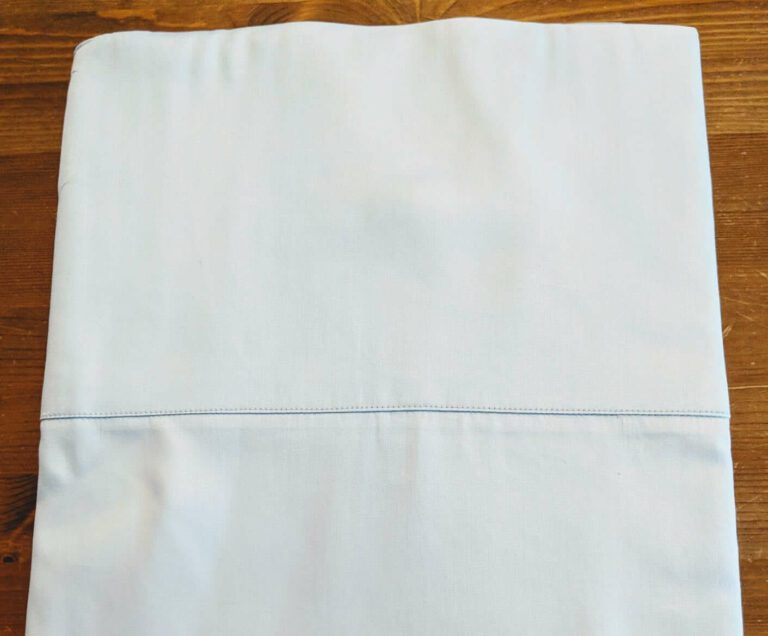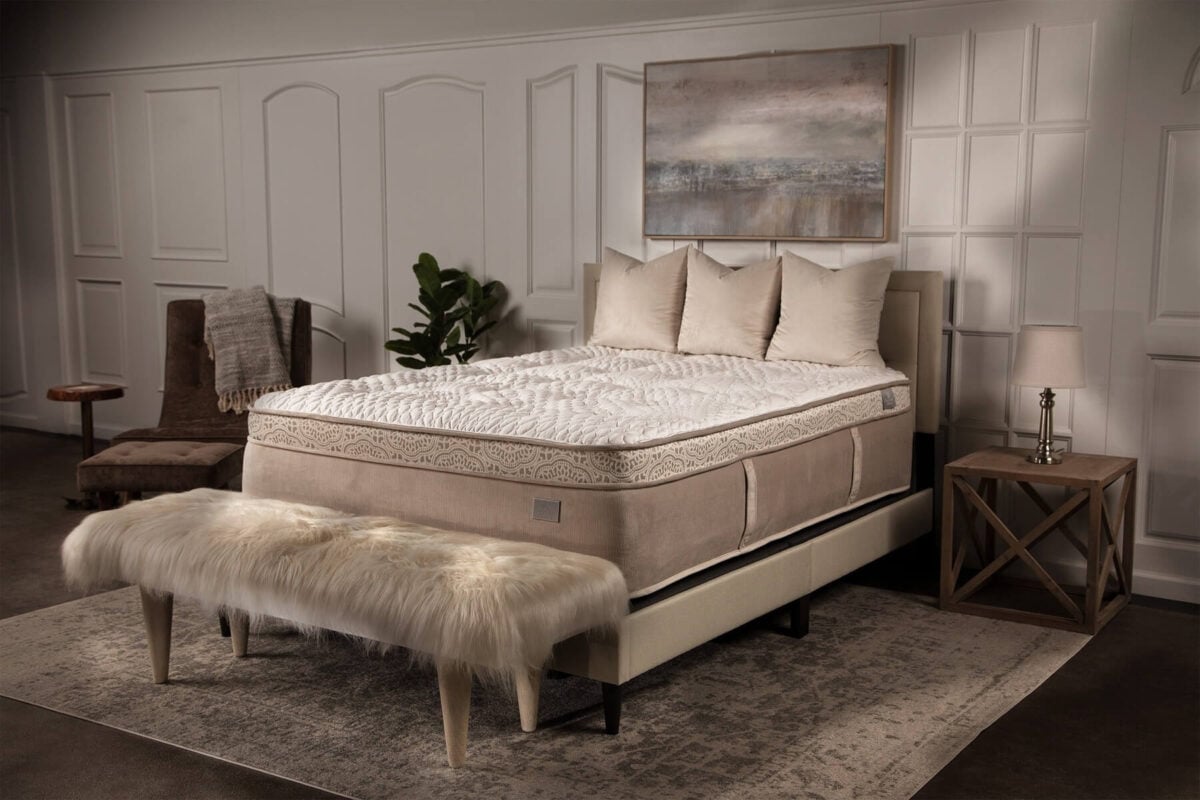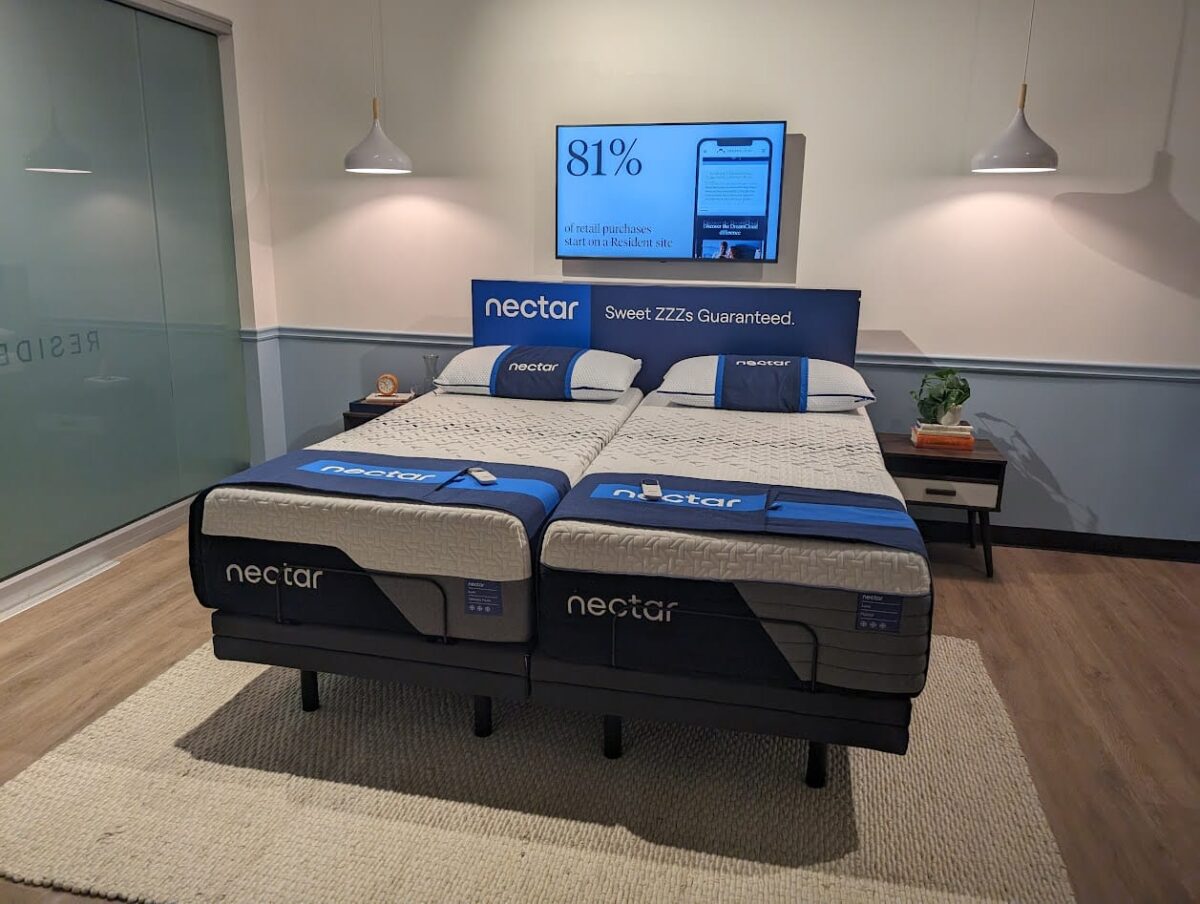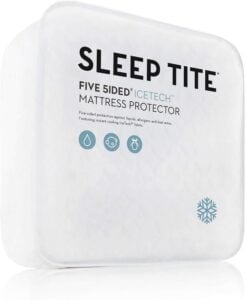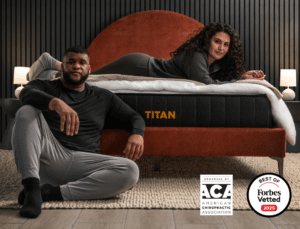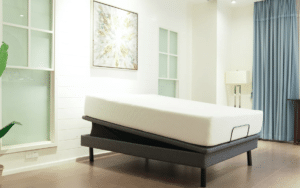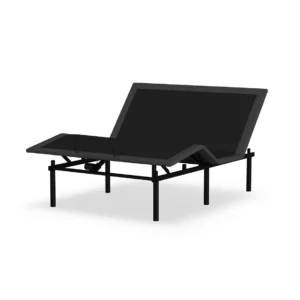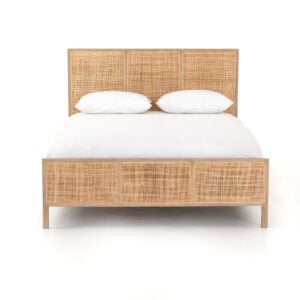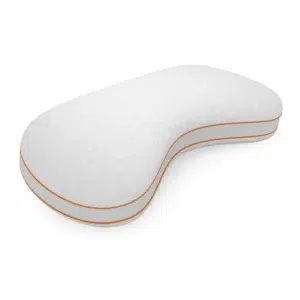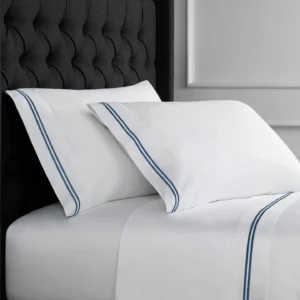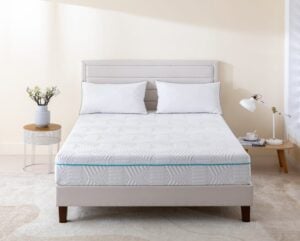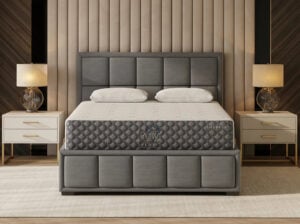More often than not, people relate a good night’s sleep to a good mattress. The perception is that the body rests directly on the mattress during sleep. Thus their focus is on the quality and structure of the mattress. However, this is just half the story. The other half is a good bed sheet.
It is wrong to think that our body rests directly on the mattress when we sleep. We forget that there is an in-between layer that separates the mattress from our body. That layer is the bed sheet. Our body and skin is in touch with the sheet, not the mattress. Thus, it should matter as much as the mattress. We also have pillows. In fact, we spend one-third of our lives resting our head on a pillow. Which is why I equate good pillows with good sleep, as much as I do with a good sheet.
The importance of good bed sheets for a good sleep cannot be downplayed or ignored. There are vital considerations to buying the right bed sheet.
Why and When to Change Bed Sheets?
We literally ‘wear’ the bed sheet while we sleep. Like our clothes during the daytime, it is in close contact with our skin at night. And that’s for a good seven to 8 hours out of the 24! Hence, we should buy our bed sheets as carefully as we buy our clothes. The bed sheet should be made from high grade natural or synthetic fibers and free of allergens. It should offer comfort and smoothness. It should allow the skin to breathe. Nonetheless, it should have a refined look and an excellent finish.
Like our clothes, the bed sheet too faces the wear-and-tear from regular use:
- The fabric’s surface withers from friction with the skin and weather elements
- A regular wash with detergents damages the fabric
- It also fades the fabric and makes it look dull and lifeless
- The bed sheet absorbs dirt and sweat from the body
- Fallen hair and dandruff collect over it
- Dead skin cells are deposited on the bed sheet
As a result, the bed sheet not only withers but also becomes unhygienic for use after a certain time.
That’s why and when one needs to go shopping for new bed sheets at regular intervals.
Most manufacturers offer e-commerce experiences these days. Many also offer online as well as an offline purchase at their brick-and-mortar stores. Whatever be your shopping preference, you are sure to get spoilt for choice.
But there is a difference between choice and right choice. Below, I provide a break-down of what goes into the making of a good bed sheet. I have already reviewed a couple of sheets for you; you can check out those sheet reviews if you wish.
What to Look for in A Good Bed Sheet?
There are multiple factors at play, beginning with raw materials and their sourcing. Then, there is technology and the manufacturing process. Coming to product specifications, there is the fabric structure, the luster, and the aesthetics. All of it together makes a great sheet.
Which Are the Best Raw Materials for Bed Sheets?
There are two types of materials from which bed sheets are made – cotton, and a blend of cotton and synthetic fiber.
Different Types of Cotton Used for Making Sheets
There is cotton, and, cotton. Some commonly used cotton types for bed sheets are:
- 100% Egyptian cotton – this is the ‘elite’ league of cotton, the best in the world. It offers unmatched strength and fiber length. Egyptian cotton is very skin-friendly and gives comfort, coziness, and excellent breathability. The world’s best bed sheets are made from Egyptian cotton.
- 100% Pima Cotton – It is also known as Supima cotton. It is the second-best cotton and goes into the making of several luxury bed sheet brands. Supima is almost twice as strong as standard cotton. It is light-weight yet durable, and once can breathe easy with it.
- Upland cotton – It has medium-to-short staples. It is the functional material with average to below-average counts on fiber-length, smoothness, and longevity.
Cotton-Polyester Blend
These materials come in a combination of cotton and synthetic materials. A good example is a cotton-polyester blend. A combination that has between 90% and 70% cotton makes a good utility bed sheet. Its qualities are durability, affordability, and good surface characteristics such as softness and wrinkle resistance.
Polyester
Bed sheets made from polyester are made to last. Apart from offering excellent durability, they are water and stain resistant, shrink-resistant, and are easier to care for.
Tencel
Also known as Lyocell, this is a naturally regenerated material obtained from wood cellulose. It is ideal for responsible shoppers who prefer environment-friendly and sustainable materials. Tencel shrinks less, is smooth, and offers good breathability. It is also long-lasting.
These are the different materials from which your favorite bed sheet is made.
What Are the Different Types of Bed Sheets?
Apart from the mainstream woven bed sheet, you will encounter several other types in the market – knitted, rayon, flannel, microfiber, and linen. Below is a brief exposure to each type.
Knit Bed Sheets
Knit bed sheets are manufactured from pure cotton as well as blended materials. They give that additional warm and pampering feeling that knitted fabrics and yarns are associated with. This is due to the 4-directional stretch that the knit fabrics offer. Because of their extra warmth, knit bed sheets are the winter favorites of many consumers.
Interestingly, the density of knitted bed sheets is measured in weight per square yard. This is in contrast to the thread-per-count measurement of woven bed sheets. I will review both these measurement matrixes separately in another section.
Rayon Bed Sheets
Rayon is derived from chemically treated bamboo fibers. Being a natural material, it enjoys the patronage of conservationists and environmentalists.
Rayon is very adaptive. It can be made to feel like silk, cotton, or even wool. Hence, rayon bed sheets appeal to a wide range of buyers. The best part is that rayon that is a silk-lookalike is not as expensive!
Apart from this versatility, rayon bed sheets also offer the following unique features:
- It regulates the body temperature. This phenomenon can be best understood when we compare a rayon bed sheet with an air conditioner. Lying on a rayon sheet, a person’s body temperature adapts to the ambient temperature.
- Rayon is an absorbent material. Hence, these bed sheets suck out excess body moisture or the dampness around the bed.
- Rayon can be easily dyed with almost any color.
Flannel Bed Sheets
This material is a symbol of warmth and coziness. On bitterly cold nights, a flannel bed sheet is warm and inviting for a tired body and mind. Its soft and slightly cushiony feel invites peaceful sleep.
Flannel can be made from various materials – wool, cotton, blended, or synthetic materials. Being a woven fabric, flannel is long-lasting.
Microfiber
This is a 100% synthetic material. As the name suggests, the fibers are extremely fine. To give a perspective, I will say, a microfiber is much thinner than a silk thread. In turn, a silk thread is much thinner than a strand of human hair!
Microfiber fabric is tightly woven. The result is a strong yet light bed covering that is particularly useful for winters. Its insulating character retains the body warmth. These sheets are also spill-resistant.
Linen
If microfiber is for winters, linen is for summers. The material gives excellent breathability to the bed sheets. It also has the moisture-absorbing quality, which suits warm and humid climates.
Linen is a 100% natural material. It is derived from the fibers of flax plants. Although light and airy, the fabric is strong and long-lasting.
What to Look for in A Bed Sheet?
Today, the variety and choices in the bed sheet market are truly vast. When looking for some new additions, lack of clarity can lead to wrong purchasing decisions.
I deal below with a few important aspects to help you make an informed choice.
Thread Count
This term implies the number of vertical and horizontal threads in one square inch of fabric. It is applicable to woven materials.
The common misunderstanding about thread count is that the higher, the better. After all, the density of material defines its quality, one would think.
However, this is only partially true. Higher thread counts do make the weaving denser and voluminous. But is density always desirable? No. In fact, denser thread counts lead to a rough and ‘scratchy’ surface. It also results in unwanted thickness. This is a problem for people who prefer soft, thin, silky bed sheets without compromising on strength and durability.
It really amounts to the material rather than the thread count. If it is a soft material like the Egyptian cotton, a lesser count is okay. There are good sheets with a count of 200. On the other hand, counts of 400-800 don’t offer what matters the most – comfort, softness, and that blissful feeling.
As a broad quality parameter, look for a count between 400 and 500 in the bed sheet label.
Readers would be well-advised about the prevalent thread count scam. Some manufacturers indulge in inflating the thread thickness artificially. This is done by twisting multiple threads together and then weaving them. For example, a fabric weaved with 3-ply threads at a count of 200, is pronounced as an 800-count material! I endorse the Huffington post claim that often times, 800-count sheets are make-believe.
Weave
Bed sheet choices have two broad preferences – crisp or soft. Some people like to sleep on a sensuous, silky and smooth sheet surface that gives a blissful sleep. Others prefer the crispiness.
Two different weaving types produce these feels – percale and sateen.
Percale
This finish is for people who love the matte crispiness to sleep on. Percale finish is associated with absorbent qualities. Hence, it is good for people whose bodies get heated up in sleep, producing moisture and sweat.
Sateen
The name is the definition. Sateen sheets are soft and lustrous, and I dare say, romantic.
Percale or sateen – it’s your choice really. One is like a crisp pastel business shirt, the other, a silk party shirt.
Flat Vs. Fitted Bed Sheets
Bed sheets have two universal fits – flat and elastic-lined Snap-On sheets. These are also known as fitted sheets.
Both the types have their pros and cons. The flat sheets are easy to spread. The fall can also be adjusted according to individual preference. In the case of linear or lateral designs, these sheets can be spread differently, to offer a fresh look every day. They are also easy to fold and stack. The fitted sheets give a snug and tight spread. They crumple less. However, they are a problem to fold. Unless you know how to do it, you will be struggling a lot, to fold these sheets.
What Are the Different Bed Sheet Sizes?
The bed sheet dimensions for various sizes of beds are scientifically derived after decades of research. The standardized sizes ensure the following:
- The sheets are neither too big nor too small
- Material shrinkage factor is taken into consideration
- Good fall and flow
- Adaptability for flat and fitted types
- Various heights of mattresses
The following Crand & Canopy chart gives a good idea of the mattress-to-bed sheet fit:
| MATTRESS TYPE | Bed sheet DIMENSIONS IN INCHES |
| Twin | 39″ x 75″ |
| Twin XL | 39″ x 80″ |
| Full | 54″ x 75″ |
| Queen | 60″ x 80″ |
| King | 76″ x 80″ |
| Cal-King | 72″ x 84″ |
Why Are Design and Esthetics Important?
Until now, I have dealt with the functional part of a good bed sheet. This section is about its other equally important aspect – design and aesthetics.
Let me begin by saying – The bedroom is the most personal space in a home. And a bed sheet is a home owner’s most personal expression in the bedroom. It is an extension of their personality. It reflects in their choice of bed sheet designs and patterns.
Lack of awareness about our personality type can lead to the selection of incompatible bed sheet designs and aesthetics. We may end up getting an alien feeling sleeping on them. It is as if we don’t belong to the bed sheet or vice versa. The resulting discomfort can lead to uneasy, insufficient, or restive sleep patterns.
Surely, none of us would like to be in that situation.
It is very important to connect with our bed sheets on an emotional and psychological level. Design and esthetics act as bridges in this context. As George O-Keeffe says, “I found I could say things with color and shapes that I couldn’t say any other way – things I had no words for.”
So, folks, say it with your bed sheet!
To help you, I deal below with the different types of human personalities in design and color contexts.
Bed Sheets and Color Psychology
The Red Person
Red symbolizes the cosmic energy.
A red personality is an eternal optimist. She or he is a bubbly, positive self with matching energy to transform their dreams into reality. They are competitive, confident and sociable. The red traits are often found in leaders, managers, entrepreneurs, and even soldiers. Their gusto and optimism are infectious. They spread a little bit of happiness and love for life wherever they go.
For the red person, I recommend lively, earthy, and vibrant bed sheet colors and patterns. Specific recommendations are sunflower yellow, mauve, crimson, purple, and of course, pure red.
The Blue Type
These are the peace-loving, law-abiding, stability-seeking folks. They are loyal and trustworthy. They have strong shoulders to lean on, and always carry a large size handkerchief to wipe others’ tears!
The blue tribe is social and people-friendly. They believe in the wisdom of the conventional. Obviously, they are averse to risks.
On that last count, I would recommend safe and stable colors and designs for the blue in you. Go for pastel-to-mildly warm shades. Adventurous, bold, or radical patterns are not for you. Keep to yourself, select the tried and trusted checks and polka dots and heart shapes. Opt for linear designs over the horizontal ones.
The Greens
Green stands for nature. Nature is very caring and giving, and so are the green people. Nature is never pretentious, and it doesn’t lie. The greens follow suit. They are reliable, truthful, transparent, and free of deceit. Invariably, green people are EQ-driven.
At the same time, the green brigade can visualize the big picture. They are good strategists and can plan ahead well. They are skillful and articulate. They love to listen and learn.
So, what designs, colors, and patterns should they sleep on? My recommendations: the green and yellow families of colors. Floral patterns, laces, and skirting. And asymmetrical designs – remember, nature never grows in straight lines.
Yellow
Perfectionist yellow people are also goal oriented and have high expectations from self and others. Big on detail, they are firm believers of nuancing. Socially, they are sophisticated and well mannered. They are also fun and unassuming, independent people.
A bit of a paradox – the yellow-dominated personalities are also anxious, they worry a lot and tend to be aloof and withdrawn at times.
For such dual personalities, I recommend combination bed sheets. Combine yellow with blue, orange with yellow, green with grey. They should opt for patterns with multiple shapes or designs. Anything but singularity works for them.
Why Are Pillows Equally Important?
The pillow is the smaller sibling of the bed sheet. However, its contribution to good sleep is as important.
Just consider this – we sleep for seven to 8 hours in a day. For most of this time, our heads rest on a pillow. Whether lying on our back, sleeping on sides, or sleeping head-down, the pillow acts as a support for the head and neck. Hence, a pillow must be selected wisely, depending on your sleeping position. For those who sleep on their backs, I recommend flatter pillows. This will not push up their head and neck too much. It will keep them in alignment with the rest of the body. Thicker and denser pillows work well for side sleepers. And for those who sleep head-down, I say, no pillow. It will damage your neck in the long term.
Apart from this, selection of pillows is also dependent on the following aspects:
Pillow filling
Blunted feather filling is for those grownups who still want to be cuddled and pampered at night. The soft and fluffy feel below your head will enhance the comfort factor. You may even want to hug the feather pillow while sleeping!
Memory foam-filled pillows contour their profile as per the body and head shape. They are good for sleepers who change positions frequently.
Polyester-filled pillows are a good substitute for memory foams ones. However, they are not as durable and may lose their shape.
Pillows with buckwheat hulls filling are in a special category. Such pillows shift along with your movements in the bed. Hence, your head never misses having a pillow beneath it.
Latex-filled pillows offer good breathability. They are ideal for people who sleep with their pillow over their head rather than under it. They are also resistant to molds, mildew, and mites.
Pillow Size
Firstly, I would say, your pillow size should be proportionate to the bed size. Else, the pillows will occupy too much or too little space in the bed. Large-sized pillows offer better insulation from ambient sound and light. Small-sized pillows are good to prop behind your back while reading or sitting. I don’t rule out a combination of large and small-sized pillows on your bed.
Pillow Cover Design and Pattern
People have differing preferences for pillow design, color, and pattern. Some buy them as a set that matches homogenously with the bed sheet. Others prefer mix-n-match. Whatever your preference, make sure that the pillows are not in stark visual contrast with your bed sheet. Such mismatches create a jarring, disturbing effect. It is not good esthetically as well as psychologically.
Conclusion
The scientific selection of bed sheets and pillows has come of age. It is now an acknowledged fact that they help people to get a good night’s rest and sleep.
Sleeping well matters a lot for people living a hectic life.
I will end by saying, they who sleep well, live well.


